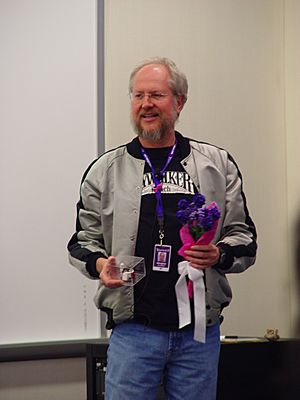JSON facts for kids
 |
|
| Filename extension |
.json
|
|---|---|
| Internet media type |
application/json
|
| Type code | TEXT |
| Uniform Type Identifier (UTI) | public.json |
| Type of format | Data interchange |
| Extended from | JavaScript |
JSON stands for "JavaScript Object Notation". It is a simple way for computers to share information. Think of it like a common language that different computer programs can understand. JSON helps different parts of a computer system talk to each other.
It is a very popular way to send data, especially on the internet. For example, when you use an app or a website, JSON often helps send information between your device and the website's server. It is easy for computers to read and write.
JSON is often used instead of another format called XML. One big reason is that JSON is simpler to work with. It also uses fewer words to say the same thing, which makes it faster. Many different programming languages can use JSON. These include JavaScript, Python, Java, and PHP.
How JSON Helps Computers Talk
JSON is like a universal translator for computer data. It helps different programs and systems share information easily. Imagine you have a game on your phone and it needs to get new levels from a server. JSON can package that level data so both your game and the server understand it.
It is often used in Ajax, which helps websites update parts of a page without reloading the whole thing. This makes websites feel faster and smoother. Because JSON is so simple, it is easy for programmers to create tools that read and write JSON data.
The History of JSON
JSON was created because people needed a better way for websites to talk to servers in real-time. In the early 2000s, websites often used special plugins like Flash to do this. These plugins were not always easy to use or safe.
Douglas Crockford was the person who first described and made JSON popular. He worked at a company called State Software. JSON was designed to be a part of the JavaScript programming language. However, it quickly became a way to share data that any programming language could use. This means that even if you are not using JavaScript, you can still use JSON to send and receive data.
Many tools and libraries are now available for different programming languages. These tools make it very easy for developers to work with JSON data.
See also
 In Spanish: JSON para niños
In Spanish: JSON para niños


